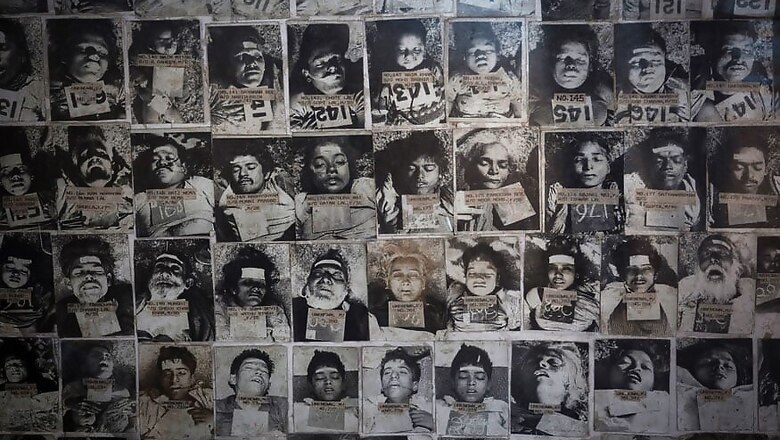
views
Bhopal gas tragedy, one of the world's worst gas industrial disasters that occurred on the intervening night of December 2-3 in 1984, claimed several innocent lives and left scores of others with serious health complications.
As per official records, the disastrous tragedy claimed 3,787 innocent lives. The toll were initially estimated at 2,259 but were updated by the Madhya Pradesh government. According to an affidavit submitted in 2006, the government said that the Bhopal gas tragedy caused 4,58,125 injuries that included 38,478 temporary partial injuries and around 3,900 severely and permanently disabling injuries.
It was around midnight that the chemical reaction started in the Union Carbide India Limited (UCIL) pesticide plant in Bhopal, Madhya Pradesh. More than 5 lakh people were exposed to methyl isocyanate (MIC) gas after the toxic gas started to leak from one of the tanks factory. The city in no time turned into a gas chamber.
Bhopal Gas Tragedy: How MIC leakage took place
The UCIL gas plant in Bhopal had three underground 68,000-liter liquid MIC storage tanks. The gas leak in the Union Carbide, which is now known as Dow Chemical, started at the Plant Number C. Methyl isocynate gas was mixed with water for cooling the plant. Soon there was tremendous pressure on tank and it began to release tonnes of the toxic MIC gas leak was reported to emanate from tank E610.
The poisonous gas started to spread to the rest of the Bhopal city from the UICL plant killing people - both awake and asleep.
It is estimated that about 40 tonnes of methyl isocyanate (MIC) gas escaped from the tank in the atmosphere within two hours.
Methyl isocyanate is extremely toxic and if its concentration in air touches 21ppm (parts per million), it could not be tolerated and can result in pulmonary or lung edema, emphysema and hemorrhages, bronchial pneumonia and death. In Bhopal tragedy, the level was way higher.
Aftermath in Bhopal
After the poisonous gas started to spread into the city of Bhopal, a large number of city's population was coughing, complaining of itching in eyes, skin and facing problems in breathing. The gas caused internal hemorrhage, pneumonia and death. The worst affected were the people residing in the villages and slums within the proximity of the gas plant.
The severity of the situation intensified because the alarm system the UCIL had did not work for several hours. Scores of people started to rush to hospitals in the morning of December 3, 1984 complaining several health ailments.
People complained of breathing disorder, itchiness in eyes, rashes, skin irritation, dizziness, sudden blindness among others and were clueless about all facing similar problem. Even doctors were baffled and clueless with so many people coming with similar ailments. The number of hospitals back then in Bhopal was way lesser.
Internal organs such as lungs, brain, eyes, muscles, gastrointestinal, neurological, reproductive and immune system of those exposed to the toxic gas in Bhopal were severely affected. Bodies of people and animals were lying unattended on streets. Plants in the city turned black with the intense toxin in the air. Many pregnant women's foetuses were damaged due to the toxic air in the city. The fertility of men and women was also affected.














Comments
0 comment